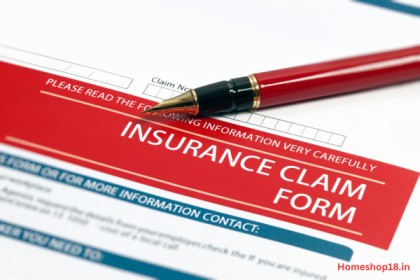What Is the Bike Insurance Claim Process? A Friendly Step-by-Step Guide for Every Rider
What is the bike insurance claim process Owning a bike is exciting — the freedom, the speed, and the convenience make it one of the best travel companions. But when an accident, theft, or damage occurs, things can suddenly feel overwhelming. That’s where your bike insurance steps in.
This guide walks you through how to claim bike insurance smoothly, whether online or offline, along with real-life insights, pros and cons, and common mistakes to avoid.
Understanding the Bike Insurance Claim
A bike insurance claim is your way of asking the insurance company to compensate you for financial loss when your motorcycle is damaged, stolen, or causes damage to a third party.
- Third-Party Bike Insurance – This covers damage or injury to another person or their property but doesn’t cover your bike.
- Comprehensive Bike Insurance – This provides complete coverage, including your own bike’s damage, theft, fire, riots, natural disasters, and third-party liabilities.
If you’ve opted for comprehensive insurance, you can claim in several situations such as:
Most plans also include a Personal Accident Cover, which provides financial support in case of accidental injury or the unfortunate death of the rider or a third-party individual.
Types of Bike Insurance Claims

1. Own-Damage Claim
When your bike is damaged in an accident, fire, or due to natural calamities.
2. Third-Party Claim
When another vehicle or person is affected because of your bike. These claims are handled through the Motor Accident Claims Tribunal (MACT).
3. Theft Claim
When your bike is stolen, and after filing an FIR, you receive compensation based on your insured declared value (IDV).
Step-by-Step Bike Insurance Claim Process
Step 1. Inform Your Insurer
- Online through their portal or app
- Via toll-free helpline
- By email or physical visit to their office
Step 2. Gather Proof and Details
Click clear photos of the damage, the accident spot, and any third-party vehicle involved.
If others were present, collect their contact information — it may help later.
Step 3. File an FIR (If Needed)
For major accidents, thefts, or third-party involvement, you must file a First Information Report (FIR) at the nearest police station. Keep a copy safe — it’s required for claim verification.
Step 4. Collect Your Documents
Keep these ready:
- Duly filled claim form
- Bike registration certificate (RC)
- Driving licence of the rider
- Copy of your insurance policy
- FIR copy (if applicable)
- Repair estimate from the garage
- Tax receipt (for new bikes)
Step 5. Vehicle Inspection
Once the insurer receives your claim, they’ll send a surveyor to inspect the damage.
They’ll prepare a report and decide the eligible claim amount based on policy coverage and depreciation rates (e.g., 50% for plastic parts, 80% for metal).
Step 6. Repair and Settlement
You can either:
- Use a cashless garage (insurer pays directly to the garage), or
- Pay first, then get reimbursed by submitting original repair bills and receipts.
In most cases, riders receive claim reimbursement within 7–10 working days after approval.
Documents Required for Bike Insurance Claim
| Document | Purpose |
|---|---|
| Filled claim form | To initiate your request officially |
| Insurance policy copy | Confirms your coverage and validity |
| RC (Registration Certificate) | Verifies bike ownership |
| Driving Licence | Confirms the rider’s eligibility |
| FIR / Police Report | Legal proof of accident or theft |
| Repair estimate & bills | Basis for reimbursement |
| Tax receipt (if new) | Validates new vehicle registration |
Online vs Offline Claim Process – Comparison
| Feature | Online Claim Process | Offline Claim Process |
|---|---|---|
| Ease of access | Anytime through app/website | Needs physical visit |
| Speed | Faster, usually 7–10 days | Slower due to manual paperwork |
| Documentation | Upload scans/photos | Submit hard copies |
| Communication | Instant via email/SMS | Requires follow-up calls |
| User Experience | Convenient and contactless | Personal interaction with staff |
| Best For | Tech-savvy or busy users | Those preferring personal guidance |
Real Customer Experiences
Many bike owners share that their first insurance claim felt intimidating — but after doing it once, they found the process simpler than expected.
“When my bike skidded during rain, I was nervous about the paperwork. But the insurer’s online claim system was super easy. I uploaded photos, and the surveyor approved within two days.” — Ravi, Pune.
“My bike was stolen from the parking lot. I filed an FIR, and after 90 days, I got my insurance cheque based on my IDV. The key was staying patient and keeping documents ready.” — Arun, Chennai.
“I prefer cashless garages. Once, my handlebar got damaged in an accident. The service centre handled everything, and I didn’t have to pay upfront.” — Neha, Delhi.
Real riders agree: the claim experience depends heavily on documentation and timely communication with the insurer.
Pros and Cons of Online Bike Insurance Claim
| Pros | Cons |
|---|---|
| Easy and quick to initiate | Requires internet access |
| Track status anytime | Some may find apps confusing |
| Contactless document upload | Delay possible if photos are unclear |
| Faster settlements | Limited help for complex claims |
| Environment-friendly (paperless) | Not ideal for people preferring face-to-face assistance |
Buying & Claiming Tips (from Rider Experience)

- Always read your policy terms – Know what’s covered (and what’s not).
- Avoid unnecessary delays – Inform your insurer immediately after an incident.
- Never hide prior damages – Surveyors can easily identify them.
- Choose authorised service centres – Claims are smoother and better accepted.
- Keep digital backups – Store your RC, DL, and policy in DigiLocker or mParivahan.
- Be honest during claim reporting – Avoid over-stating damage; honesty helps approval.
- Track your No Claim Bonus (NCB) – Maintaining a clean record gives big discounts on renewal.
5 Best bike insurance companies in 2025
Common Mistakes to Avoid During Claim
- Not filing an FIR when required (especially for theft or major accidents).
- Using unauthorised garages, which may lead to rejection.
- Delaying repair or intimation, making it look like old damage.
- Losing original receipts needed for reimbursement.
- Trying to claim for expired or old policies.
Remember: insurers design these rules to prevent misuse, not to trouble genuine customers. If your claim is honest and timely, you’ll likely have a smooth experience.
What is idv in bike insurance in 2025
FAQs – Bike Insurance Claim Process
Q1. Can I claim if my bike was damaged a few months ago?
Usually, no. Insurers don’t cover old or prior damage. Claims must be reported immediately after the incident.
Q2. How long does it take to receive reimbursement?
It typically takes 7–30 days, depending on whether it’s a cashless or reimbursement claim.
Q3. What happens if my bike is stolen?
File an FIR immediately. After 90 days, when police issue a “non-traceable report,” submit it to your insurer along with documents. You’ll be compensated based on your IDV (Insured Declared Value).
Q4. Can I claim under third-party insurance for my own damage?
No. Third-party insurance only covers injury or damage caused to others — not your own bike.
Q5. Do I need to go to court for a third-party claim?
Yes, such claims are handled by MACT (Motor Accident Claims Tribunal), where compensation is decided based on evidence and reports.
Q6. Is online claim submission safe?
Absolutely. Reputed insurers have secure portals and apps that allow you to submit claims digitally with encryption.
How to download two wheeler insurance copy
Final Thoughts
The bike insurance claim process might seem complex at first, but once you understand each step — it’s straightforward.
From reporting the incident to submitting documents and getting reimbursed, everything depends on timeliness, transparency, and communication.
Whether you’re handling a small repair claim or a theft case, staying calm and organised makes all the difference.
Every experienced rider will tell you:
“The best insurance claim is one you’re prepared for — not one you panic about.”
Keep your documents handy, stay informed, and ride safe!.





